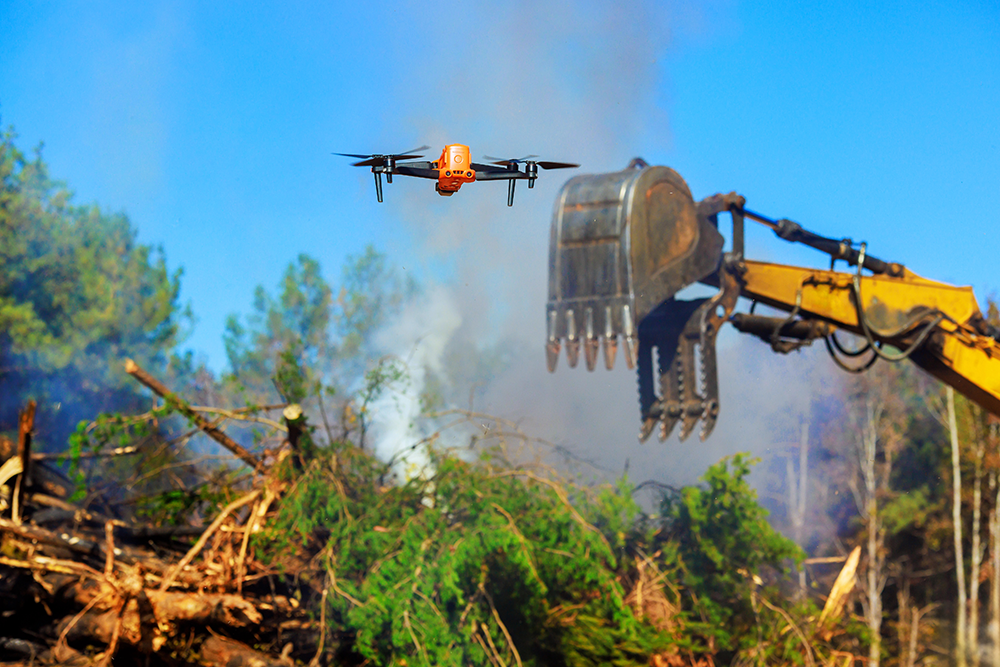Ecological Restoration 101: The Science Behind Ecosystem Recovery

Ecological restoration, the practice of renewing and restoring degraded or damaged ecosystems, is both a science and a necessity in today’s world. As climate change and human impact accelerate ecosystem decline, this restoration helps bring back biodiversity, improve soil health, and stabilize natural areas. The science behind this restoration involves a detailed understanding of ecology, hydrology, and plant biology to achieve effective and lasting ecosystem recovery.
Coleman Environmental Engineering, LLC offers specialized services in remedial construction and environmental engineering, utilizing these principles to support sustainable recovery efforts in various environments.
The Foundations of Ecological Restoration
The restoration begins with a comprehensive assessment of the environment in question, determining the extent of degradation and the most suitable methods for recovery. Factors like soil quality, plant diversity, hydrology, and native species play a critical role in deciding how to approach restoration. Restoration ecology—a branch of ecology specifically devoted to understanding how ecosystems function and recover—is the scientific basis that guides ecological restoration projects.
In the past few decades, restoration ecology has emerged as a vital area of research, focusing on how natural processes like succession, nutrient cycling, and species interactions can be encouraged or reintroduced to aid ecosystem recovery.
These insights allow environmental professionals to design restoration projects that not only address visible damage but also help rebuild the underlying ecological processes that sustain life. Restoring an ecosystem often requires careful planning and a deep understanding of how species and environmental conditions interact.
Key Approaches
Several approaches are commonly used in this restoration, each adapted to the specific needs of the site. For instance, reforestation—planting native trees to restore forested areas—helps stabilize soils, increase biodiversity, and improve air quality.
In grasslands or prairies, controlled burns might be used to reduce invasive species and promote the growth of native plants that benefit from periodic fire exposure. Wetlands, another critical ecosystem type, are often restored by reintroducing native aquatic plants and reconstructing water flow patterns to create a stable habitat for fish, birds, and other wildlife.
Each restoration strategy must consider the unique conditions of the ecosystem. Factors like climate, soil type, and previous land use determine the plants and processes that will best support long-term recovery. Ecological restoration is often a slow, phased process, requiring years of monitoring and maintenance to ensure that the restored ecosystem becomes self-sustaining.
The Importance of Biodiversity in Restoration
Biodiversity is at the heart of any ecological restoration project. A biodiverse ecosystem is more resilient, capable of withstanding environmental stressors like drought, disease, and invasive species. Restoration projects focus on reintroducing native species that provide essential functions; like pollinators in meadows, soil-enriching plants in forests, and aquatic vegetation in wetlands. The reintroduction of biodiversity supports a balanced ecosystem, which in turn improves water retention, nutrient cycling, and resistance to natural disturbances.
Biodiversity also has broader benefits for the surrounding environment and communities. Healthier ecosystems can support local agriculture, improve air, and water quality, and offer habitats for wildlife. Coleman Environmental Engineering, LLC applies restoration principles to projects that support community resilience and sustainable land use, drawing from the ecological knowledge necessary to ensure that these landscapes contribute positively to local ecosystems.
Challenges in Ecological Restoration
Restoring ecosystems often involves overcoming significant challenges. In some cases, soils may be contaminated or compacted, reducing the ability of plants to establish roots. Other times, invasive species may have crowded out native flora, necessitating careful removal and management of non-native plants to allow for natural regrowth. Climate change, with its unpredictable patterns of temperature and rainfall, also complicates restoration efforts by altering the conditions that native species have adapted to.
The reality of this restoration is that it is rarely a one-time solution. Long-term success depends on continuous monitoring, adaptive management, and sometimes the intervention to address new environmental challenges. In this way, this restoration is not simply about fixing an ecosystem but also about building a foundation for ongoing resilience.
Human Impact and Restoration Goals
Human activities, including urban expansion, agriculture, and industrial development, are some of the primary drivers of ecosystem degradation. Ecological restoration often aims to reverse these impacts by mimicking natural processes and re-establishing native species and habitats.
For example, a degraded forested area might be restored by replanting native trees and removing barriers to wildlife movement. Similarly, in areas affected by mining or construction, this restoration can involve regrading the land, replacing lost topsoil, and reintroducing native plants to stabilize the soil and promote habitat formation.
Restoration projects are typically guided by specific goals, whether they focus on biodiversity, water quality, soil stabilization, or providing habitat for particular species. Coleman Environmental Engineering, LLC integrates these goals into every project, working to achieve ecological balance while supporting sustainable community development.
The Role of Technology
Modern technology plays an increasingly important role in ecological restoration. Tools such as geographic information systems (GIS), remote sensing, and soil analysis provide valuable data that guide restoration plans. These technologies allow us to map ecosystems, monitor vegetation growth, and measure soil conditions, making it easier to identify areas in need of intervention and track the progress of restoration efforts over time.
For example, GIS can highlight areas at high risk for erosion, enabling us to apply targeted restoration strategies. Drone technology also allows us to monitor remote or hard-to-reach sites, providing accurate data on vegetation cover and species diversity. The integration of these tools helps Coleman Environmental Engineering, LLC deliver more effective and precise restoration solutions, combining scientific knowledge with innovative technology to support the natural recovery of ecosystems.
The Future of Ecological Restoration
As environmental challenges continue to grow, this restoration will play an increasingly important role in global sustainability efforts. Restoration projects contribute to climate change adaptation, enhance food security by improving soil health, and protect biodiversity. As part of a broader strategy for environmental management, ecological restoration can help mitigate the impacts of human activity while promoting sustainable land use.
In the coming years, this restoration will likely see even greater integration with other areas of disaster recovery debris management and sustainable development. The goal is to create a comprehensive approach that not only restores individual ecosystems but also contributes to a resilient and interconnected natural landscape.

